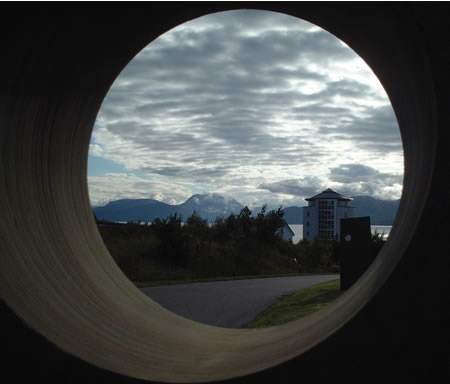Tháinig mé ar ais go Bangor Dé Máirt an seachtaine seo caite i ndiaidh saoire ar fheabhas ar fad in Éirinn, Albain agus Sasana.
In Éirinn bhí sé an deas daoine a bhuail mé leis ag an scoil samhraidh anuraidh a fheiceáil arís, agus ag bualadh le a lán daoine eile. Bhí mé sa rang a sé i mbliana, agus bhí i bhfad níos mó deiseanna ann mo chuid Gaeilge a cleachtadh na a bhí sa rang a seacht anuraidh. Bhain mé triail as Gaeilge a labhairt an t-am ar fad taobh amuigh den rang freisin. Sa tráthnóna rinne mé an amhránaíocht sean-nóis le Gearóidín Bhreathnach agus bhain mé an-sult as.
Bhí ceolchoirmeacha ann san oíche le ceoltóirí, amhránaí agus scéalaí den scoth, agus seisiúin sa tithe tábhairne i ndiaidh sin. Sheinn mise an fheadóg íseal beagnach gach oíche sa seisiúin chomh maith -ní raibh gach port agam, ach bhí roinnt acu agam. Caithfidh mé níos mó a fhoghlaim de ghlanmheabhair -is féidir liom a lán port a sheinm ón ceol scríofa, ach ní féidir liom a oiread a sheinm gan ceol. Bhí roinnt againn ag seinn i ngach áit – sa tithe tábhairne, sa bhialann, sa lóistín agus nuair a bhí muid amuigh ag siúil.
Adventures
I got back to Bangor on Tuesday of last week after a fantastic holiday in Ireland, Scotland and England.
In Ireland it was lovely to see so many of the people I met at the summer school last year again, and to me many others. I was in the level 6 language class this year, and there many more opportunities to practice my Irish than there were in level 7 last year. I also tried to speak as much Irish as possible outside class. In the afternoons I was in the sean-nos singing class with Gearóidín Bhreathnach and really enjoyed it. Some of us in the class couldn’t help breaking into song wherever we happened to be – in pubs, restaurants, lodgings and while out walking.
There were concerts in the evenings with top musicians, singers and storytellers, and sessions in the pubs afterwards. I even played my low whistle in quite a few of the sessions – I didn’t know all the tunes, but could play along with some of them at least. I need to learn more tunes by heart – at the moment I can play plenty of them with written music, but not nearly so many without the music. I say this to myself everytime I go to Ireland, and am gradually building up my repertoire of tunes.
I’ve decided to write in one main language each time on this blog, rather than trying to write in Welsh, Irish and sometimes Chinese every time. This is mainly because it takes me quite a long time to write everything in two or three languages. And because I think it’s better to write directly in each language, rather than translating from Welsh into the others, as I usually do. So today it’s Irish (and English), yesterday was Welsh, and tomorrow I might have a go at Scottish Gaelic. When I get round to it, I’ll write English versions of the posts – sort of loose translations with extra bits.

